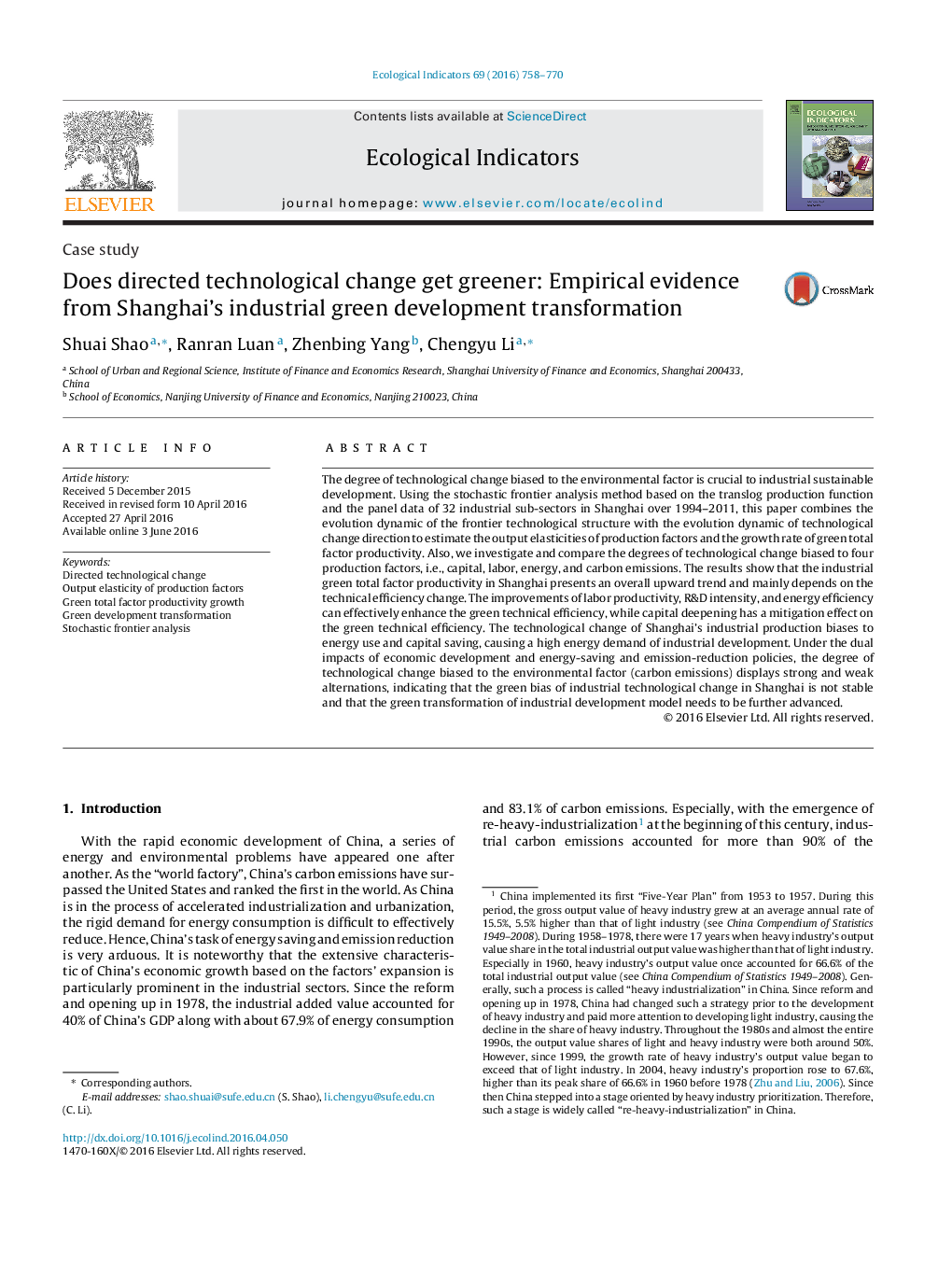| Article ID | Journal | Published Year | Pages | File Type |
|---|---|---|---|---|
| 6293343 | Ecological Indicators | 2016 | 13 Pages |
Abstract
The degree of technological change biased to the environmental factor is crucial to industrial sustainable development. Using the stochastic frontier analysis method based on the translog production function and the panel data of 32 industrial sub-sectors in Shanghai over 1994-2011, this paper combines the evolution dynamic of the frontier technological structure with the evolution dynamic of technological change direction to estimate the output elasticities of production factors and the growth rate of green total factor productivity. Also, we investigate and compare the degrees of technological change biased to four production factors, i.e., capital, labor, energy, and carbon emissions. The results show that the industrial green total factor productivity in Shanghai presents an overall upward trend and mainly depends on the technical efficiency change. The improvements of labor productivity, R&D intensity, and energy efficiency can effectively enhance the green technical efficiency, while capital deepening has a mitigation effect on the green technical efficiency. The technological change of Shanghai's industrial production biases to energy use and capital saving, causing a high energy demand of industrial development. Under the dual impacts of economic development and energy-saving and emission-reduction policies, the degree of technological change biased to the environmental factor (carbon emissions) displays strong and weak alternations, indicating that the green bias of industrial technological change in Shanghai is not stable and that the green transformation of industrial development model needs to be further advanced.
Related Topics
Life Sciences
Agricultural and Biological Sciences
Ecology, Evolution, Behavior and Systematics
Authors
Shuai Shao, Ranran Luan, Zhenbing Yang, Chengyu Li,
